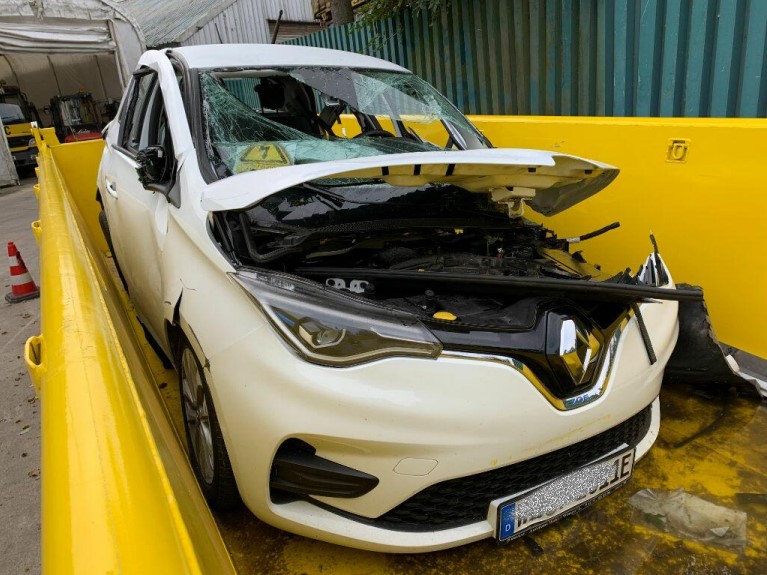Topics at the Allianz Center for Technology:
AZT study on claims experience for high-voltage vehicles

February 2023
An AZT analysis of market data (source: GDV) found a markedly different distribution of damage types over several years, sorted by drive type: relatively constant over time, the damage types theft and fire, flooding, etc. are clearly underrepresented for battery-electric passenger cars (BEV) compared to conventional vehicles. In contrast, collision costs dominate the claims expenditure for BEV with an MOD share of about 84 % compared to about 73 % for conventional vehicles. However, these data are highly aggregated and do not allow any detailed statements. Nevertheless, the market data show that the greatest levers for improving claims costs lie in collisions.
From the Allianz claims of the year 2021, a random sample of 400 MOD collision claims with BEVs was considered in detail. For comparison, 350 similar cases from a select until 2018 with purely conventional drives were available as a reference group. The reference group, however, represents an older population regards both, average age and year of manufacture. Like the cases examined in an earlier study in 2017, these 350 cases were adjusted for inflation on the basis of the claims cost development determined by the GDV for automotive repairs.
The average collision loss for BEVs is about 18 % higher than for ICEs in the reference group. The median is still 6 % higher, which clearly demonstrates the effects of expensive damage that can be seen in the claims.
The study found similar figures for damaged ultrasonic sensors in BEV and reference group, but more involved radar sensors for BEV and cameras only in the BEV claims. Interestingly BEV claims showed less cross members damaged than in the reference group while bumper fascia are damaged at a comparable level. This shows that accidents that can be addressed by front AEB are either avoided or mitigated, better than in the slightly older reference group.
However, parking and manoeuvring is obviously not yet addressed by the OEMs, as claims don’t show different characteristics for BEV and reference group. This is one important lever for improvements because parking and manoeuvring damage account for a significantly higher proportion of BEV's damage than in the reference group.
The study also unveils that a high portion of conventional cars was repaired in independent repair shops at lower prices than in branded repair shops. BEVs, however, are mostly repaired in branded repair shops, likely due to their low average age and lack of qualified independent repair shops. Moreover, in average the latter invoiced higher rates for BEV than for conventional cars.
A significant influence on repair costs is driven by the high voltage system. Whether it is about electronic components, charger ports or the battery itself, prices for such spare parts drive costs. The most important finding is that only one HV battery was affected by accident-related deformation of the vehicle’s body, while all the rest was impacted from the underside. In 2% of the claims the battery was affected, but due to high replacement costs, this counts for about 7% of the collision losses. This situation is comparable to total theft, where few expensive losses can drive a model’s type class and thus insurance premiums to the bad.
Major influences on the higher insurance losses are hence found in repair shop structures and prices, lack of P-AEB ADAS and very expensive damages to the HV system, often from the underside.
An abstract of the study is available here.